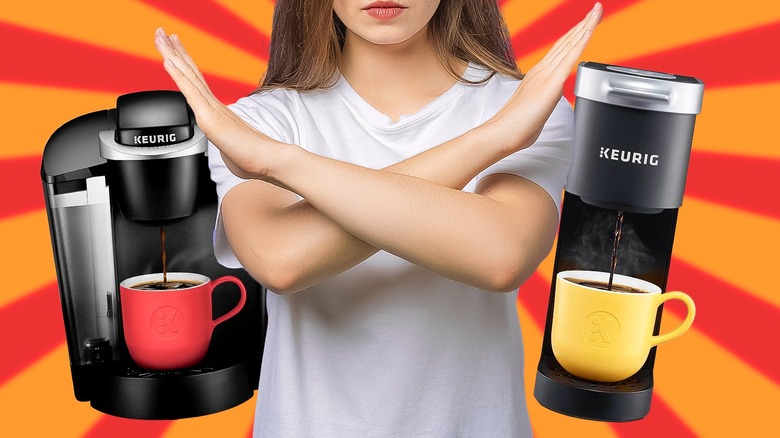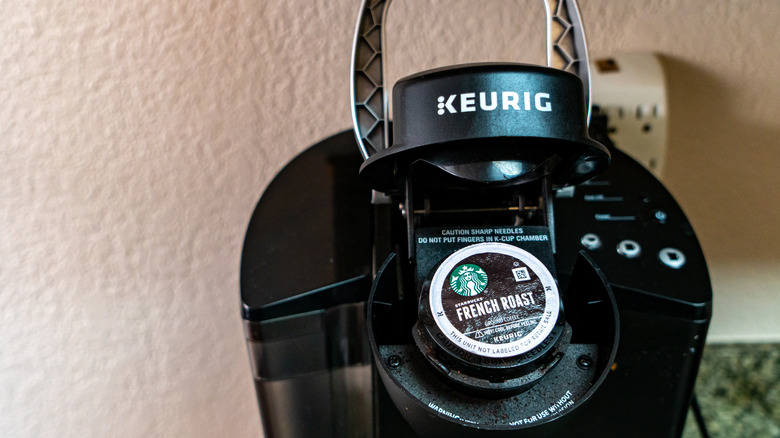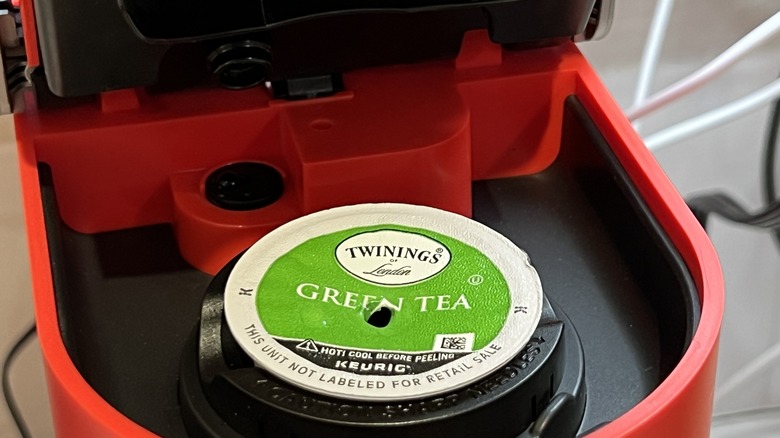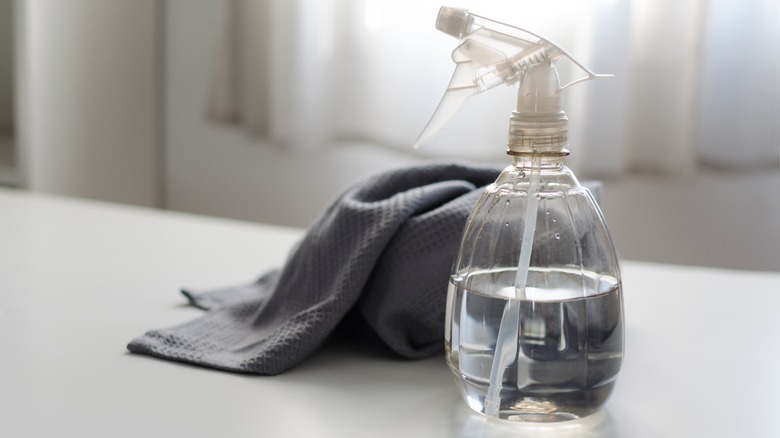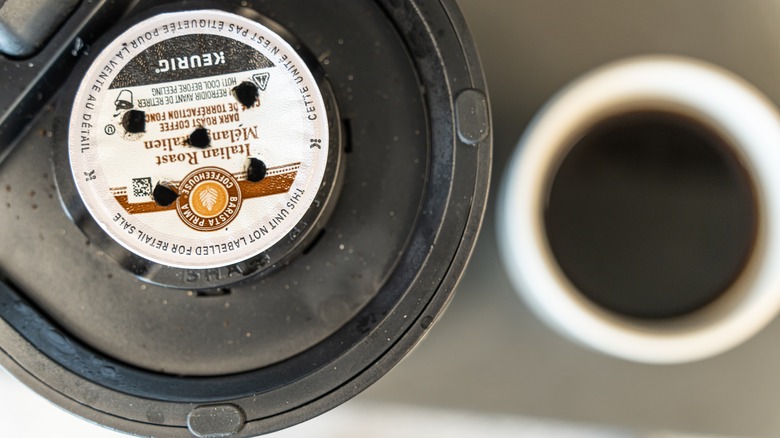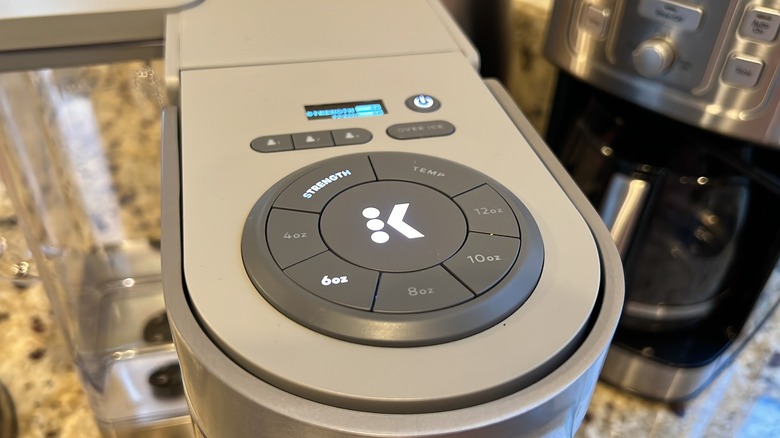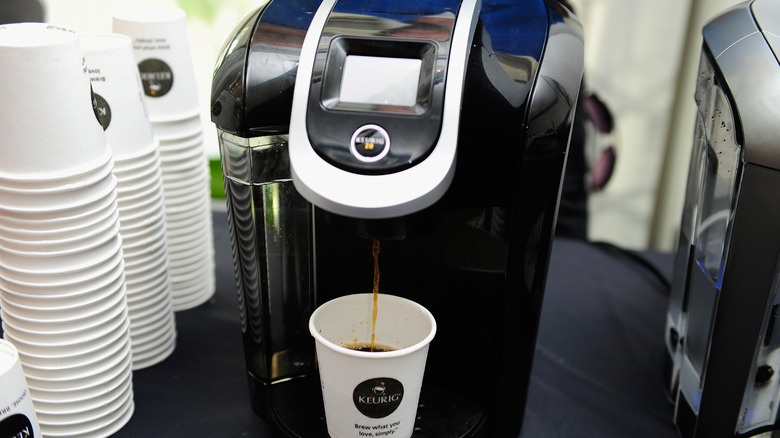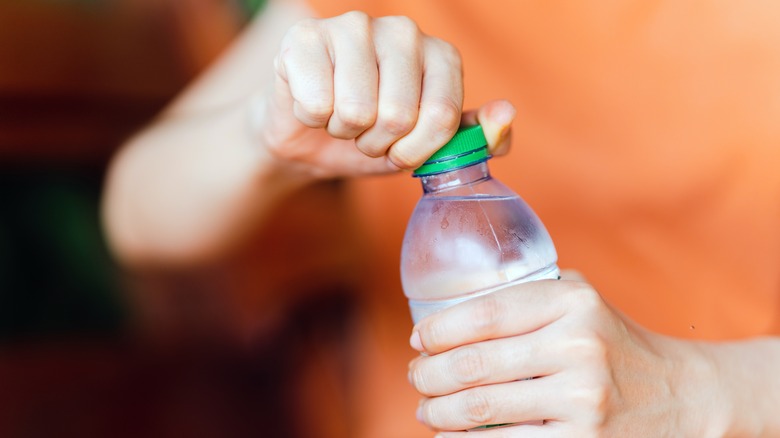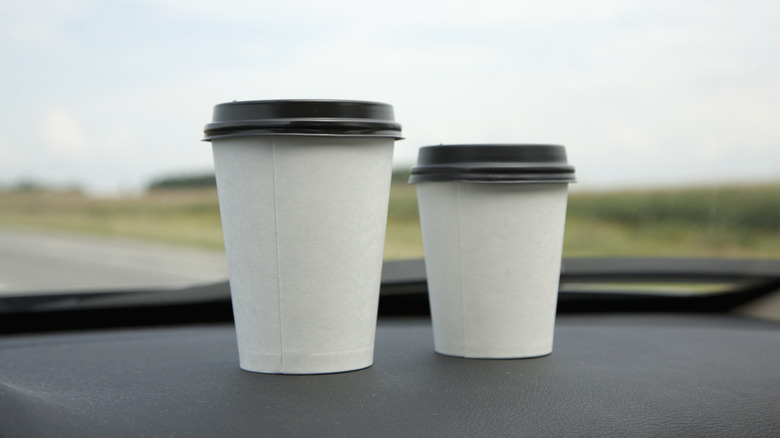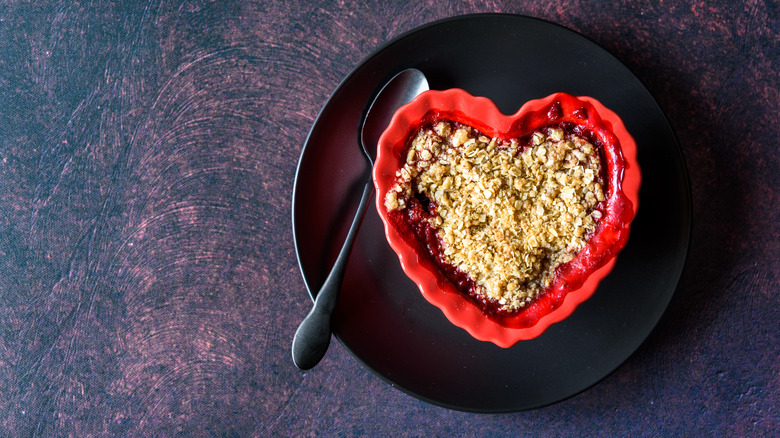10 Mistakes To Avoid When Using Your Keurig Machine
Keurig is probably one of the most well-known coffee maker brands out there — and for good reason. The level of convenience of this machine is unprecedented and rivals competitors like Nespresso. All you need to do to brew a cup in your Keurig is pop open the top, add your coffee pod, and select your brew option. In a matter of seconds, you'll have a freshly brewed, hot (or, depending on your machine, maybe iced) coffee to sip the morning away.
Despite the simplicity of this machine, there are several snags that Keurig owners, such as myself, have run into a time or two. Regardless of the Keurig machine that you own, you may have faced them as well. In order to make your coffee experience much more pleasurable, tasty, and well-brewed, I've gathered a list of some of the most common mistakes that folks make with their Keurigs, and some advice for how to overcome them and ensure that they don't happen again.
Using pre-ground pods
I have said it once and I will say it again: Pre-ground coffee is the pits. Scientifically speaking, coffee tastes better when it's made with freshly ground beans because the increased air exposure (yes, even in that secured coffee pod) zaps out any aromas or distinct flavor notes. This is because the air will progressively degrade the coffee's natural oils, which are responsible for that delectable coffee flavor you're craving.
When you purchase pods, it's hard to know how long the coffee has been sitting inside each one of them before reaching your machine. So, if you want to get the truest and freshest flavor out of your K-Cups, you're going to purchase small batches of whole bean coffee and grind it yourself. Then, you can transfer it to a reusable K-Cup pod. While this might seem like a little more work (not to mention, more mess) than plopping a pod from your office's K-Cup organizer into the machine, it will ensure that you get better, more flavorful coffee.
Leaving your pods in after brewing
We've all been guilty of it. You step up to your Keurig, plop in a pod, and walk away until your coffee is done. You wouldn't want to waste any precious time in sipping your cup, so you come back, grab the cup, and walk away. It doesn't hit you that you forgot to remove the pod once it was finished brewing until you come back to the machine and find your day-old French roast still nestled in the holder.
While it might not seem like that big of a deal, you should remove your used Keurig pods after each brew because the leftovers are a breeding ground for mold, bacteria, and all of the yucky things that you don't want in your next cup of coffee. The coffee grounds hold on to that heat and moisture, which can encourage the microorganisms to take up refuge. Besides this health concern, removing the pod will also prevent any extra buildup in your machine that may delay or impair its usage. Keep a trash can nearby and make removing those spent pods a habit.
Not descaling your machine enough
While Keurigs are far from the most expensive coffee machines out there, they still aren't cheap. So, you'll want to extend the life of your machine as long as possible by cleaning it regularly and ensuring that all of its parts are in good working order. One of the easiest ways to do this is to descale your machine frequently. The "how frequently" will depend on how often you use your machine. An office Keurig that churns out eight to 10 cups a day will need to get descaled nearly every month, while an occasional household machine can stand to have it done a few times a year.
The descaling process will depend on the type of machine you're using, so always consult the manufacturer's guide to ensure that you're doing it properly. You can also purchase the Keurig descaling solution from its website; I'd recommend using this manufacturer-verified product over some DIY or harsh chemical cleaner, as it is specifically formulated to remove mineral residue from the inside and tubing of your machine without causing even more damage.
Using a single Keurig pod for each brew
As a Keurig owner, I've had my fair share of brews that just don't hit the mark. But, rather than walk away from my machine and settle for lackluster coffee, I'll always swap the spent pod for another and brew it into the same cup.
While this brewing strategy might seem a little wasteful (plus, have you seen the price of K-Cups lately?), it will ensure that you get the optimal brew in your cup. But, you'll notice that every K-Cup is the same size — and it's designed to make a 6-ounce cup of coffee. So, although you can press the 8-ounce or 10-ounce brew setting on your machine, the amount of coffee flavor in your cup will still be the same; it will just be more watered down. So, grab the biggest mug you can find, brew no more than 6 ounces at a time, and be sure to swap out the pod out for a fresh one after the first brew.
Neglecting to clean your Keurig after each brew
Say it with me: Clean coffee makers are well-functioning coffee makers. While it might seem a little bit tedious to clean your coffee maker every single time you use it, this simple step will ensure that you have not only tasty coffee, but a well-running machine to make you that brew.
You'll want to start by cleaning your Keurig needle with a paperclip to help remove any debris and prevent it from clogging up. You'll need to remove the pod holder from the machine and clean both the top and bottom needle of the machine with the end of the paperclip. The pod holder can easily be rinsed out with running water; just be sure to leave it out to dry so that the lingering moisture doesn't contribute to any mold growth. I would also recommend running a quick flush of your machine to push out any lingering coffee particles or buildup. You should also clean out the collection tray on a weekly (if not daily) basis to prevent it from getting gunky and gross, too.
Not putting your K-Cup pod in correctly
You would think that a Keurig is a pretty intuitive machine — right? Open the top lever, pop in the pod, close the machine, and you're good to go. But what if the angle at which you put the pod in the machine also plays a difference in how your coffee brews?
The Keurig machine works because it has both a top and a bottom needle. If you put your coffee pod in at an angle, and not flush with the machine, you'll not only have to put more pressure on the lever to close the top, but you'll also cause the needle to pierce the pod at an awkward angle. This will cause there to be a larger hole at the top of the K-Cup, which can alter the way that the water flows through the pod. It can even cause the coffee grounds inside of it to flow down and into your cup. If you're not a fan of gritty coffee, be sure to place your K-Cup straight into the machine. Instead of relying on the lever to straighten the K-Cup and pierce it with the needle, try to gently push down on the cup with your fingers so that it punctures the bottom and stays straight when you push the lever down.
Using the wrong type of water for your brew
Who knew that water could be such a sensitive topic when it comes to Keurig coffee machines? As it turns out, the water that you choose to brew with may affect the longevity of the machine and how often you have to descale it. Keurig recommends using bottled or spring water for brewing and claims that folks should avoid using softened water or distilled water at all costs. Distilled water is treated to remove any impurities in it, including calcium and magnesium. As a result, it won't give your brew a good flavor. Softened water is not recommended because the water can more readily mix with the coffee grounds and become goopy. It also often contains a high amount of salt, which will affect the taste of your brew.
You can either use bottled or spring water to clean your machine, too. Essentially, you're looking for a water with a Goldilocks of mineral content — not so much that it calcifies on the machine rapidly, but not so soft that it affects the flavor and potentially damages the equipment.
Always brewing the biggest size possible
I'm the kind of coffee hound that can drink several cups of coffee each day without feeling it. As a result, I love to brew a ton of coffee in the morning before I start working. But, my automatic reaction isn't to press the largest brew capacity that my Keurig offers. Rather, I'll always go for a 4 or 6-ounce cup and then make extra from there.
This is because the Keurig cups are only designed for 6-ounce servings of coffee. So, if you press that 12-ounce button, you're going to get a coffee that's super weak and dull-tasting. Rather, you're better off sticking to the 4 or 6-ounce setting on your machine.
If you don't want to keep going through one K-Cup after another, you can always use a reusable K-Cup that's designed with two fill lines in mind — one for smaller sized brews and one for larger ones. This will allow you to select your desired coffee variety and also add enough coffee to tailor your cup to your preferred strength.
Only using your Keurig for coffee
Keurig is often marketed as just a coffee machine, or one that can do coffees, teas, and hot chocolate. But, there are actually endless uses for your Keurig machine that you may have never even thought of.
The Keurig is a great appliance to keep in a college dorm because you can brew hot water for your oatmeal and instant ramen noodles with it. Depending on the size of your bowl or cup, you may have to remove the bottom tray from your Keurig so that you can snugly place it underneath the water spout.
While hot coffee and tea are excellent selections for brewing with your machine, you could also make fancier beverages with it. Add a scoop of vanilla ice cream to a mug and brew a strong 4-ounce cup of coffee on top of it for a simple version of an affogato. The flavor will be super milky and sweet, and you won't have to whip out a fancy espresso machine to whip up this dessert.
Buying cheap or poor-tasting coffee cups
Life is too short for bad coffee. If you are insistent on going the plastic K-Cups route, you'll need to make sure you're buying the best coffee available. In my experience, I've found the K-Cups specific pods to have the best flavor; off-brand ones just don't seem to have that same punchiness or proper ratio of beans to brew.
Before you order your pods, you'll need to have a basic understanding of the difference between light and dark roast coffee — or you'll be in for a rude awakening when you go to sip your cup. Light roast coffee tends to be very bitter and acidic, which I personally think is not the type of coffee best for brewing in a K-Cup. In my experience, this acidity is more pronounced when the coffee is weak, like when you go to brew an 8- or 10-ounce cup of coffee in your machine. Medium roasts and dark roasts will give you a more robust flavor with less acidic notes.
Some of the best Keurig K-Cup coffee pods that you need to try include the Caribou Blend from Caribou Coffee; it has a mild flavor that walks a thin tightrope between being acidic and bitter and rich and complex. West Coasters will also love ordering a package of Peet's Big Bang medium-roast K-Cups.
